Samsung Galaxy S23 vs Google Pixel 7

Intro
The Galaxy S23 is one of the best compact phones out there, but if it wants to claim the number one spot it needs to offer more than the already excellent (and more affordable) Pixel 7.
So what is that special sauce that Samsung has cooked up in the Galaxy S23?
First, it starts with the Snapdragon 8 Gen 2 processor inside it, which delivers a much faster performance than the Pixel. Samsung also refreshes the camera system, which includes a zoom lens that the Google phone lacks. And last but not least, the Galaxy S23 is actually quite a bit more compact than the Pixel.
Galaxy S23 vs Pixel 7 in a nutshell:
- Galaxy is more compact
- Pixel has a slightly larger screen (6.3" on Pixel vs 6.1" on Galaxy)
- Galaxy has three rear cameras, Pixel only has two
- Pixel has AI features the Galaxy lacks
- Galaxy has One UI with more features
- Pixel has bigger battery
- Galaxy supports slightly faster charging speeds
- Galaxy has longer software support
Table of Contents:
Read more:
Design
The Galaxy is more compact and it weighs less
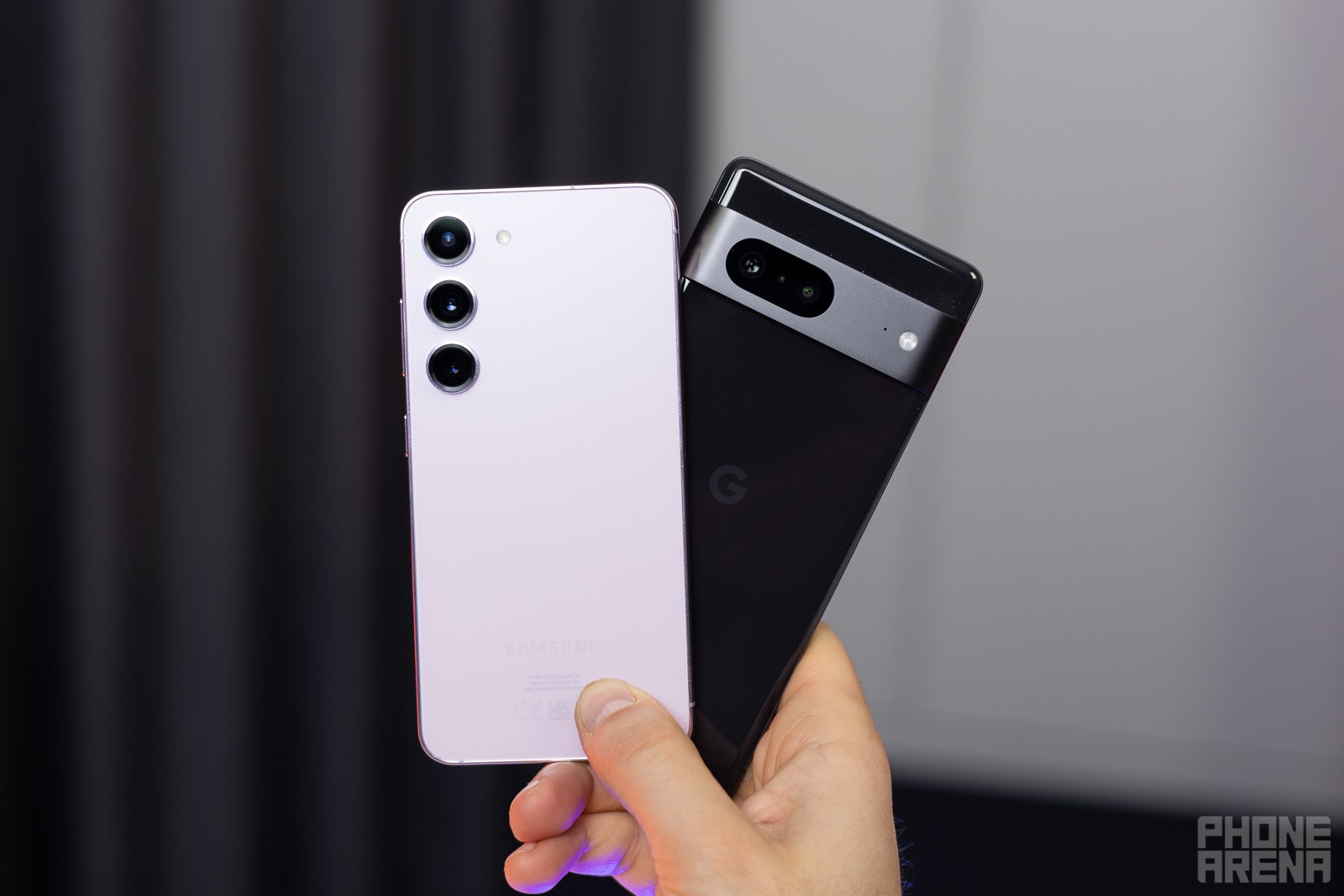
(Image Credit - PhoneArena) S23 Ultra on top, Pixel 7 behind it
One of the main differences between the Galaxy S23 and the Pixel 7 is just the size. While both pass for "compact phones", the Galaxy is definitely the more compact of the two:
- Galaxy S23 specs: 146.3 x 70.9 x 7.6 mm, 168 g weight
- Pixel 7 specs: 155.6 x 73.2 x 8.7 mm, 197 g weight
The Galaxy is narrower, less tall and thinner, making it easier to operate with one hand, and we expect it to be significantly lighter than the Pixel. All of this is music to the ears of small phone lovers.
Both phones have their own unique identity. The Pixel has the camera strip on the back making it easy to recognize in a crowd, and the Galaxy has each camera lens separated, which is also a very modern esthetic. For all else, both phones are similarly well made, with an aluminum frame and toughened glass on the front and back.
Both phones also carry an IP68 water and dust protection certification, giving you a peace of mind that they will survive a drop in water or getting dusty.
Samsung traditionally offers a wide variety of colors to choose from, including the standard black and white, but also many others, so you will definitely be able to pick just the right tonality for your taste. The Pixel 7 comes in a more limited selection of three colors, a black one, a white one (our favorite), and then a cool "lemongrass" shade that also catches the eye.
Display Quality
The Galaxy S23 has the superior display
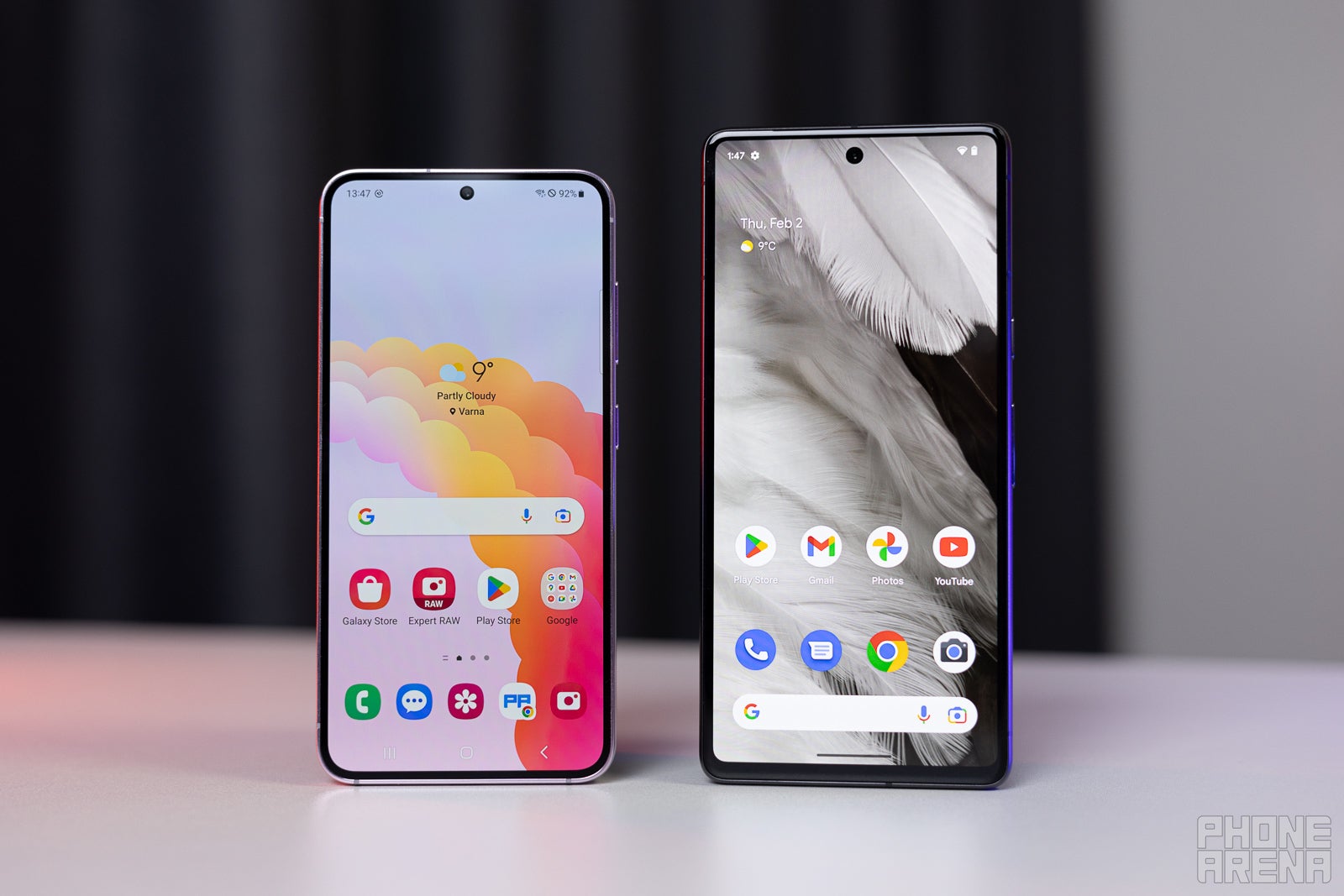
(Image Credit - PhoneArena) The Galaxy has a smaller screen
The Galaxy S23 has one advantage over the Pixel, however, and that is the screen. It comes with a fast 120Hz refresh rate, while the Pixel 7 support 90Hz refresh rate.
The screen of the S23 has a number of advantages over the Pixel: it is simply a higher quality screen, it gets brighter, and it can also get dimmer for comfortable night time use.
Biometrics
In terms of biometrics, both phones rely primarily on a fingerprint scanner built inside the screen. The Galaxy S23 uses an ultrasonic fingerprint reader which has recommended itself very well over the years, while the Pixel 7 uses an optical scanner, which is now better than in previous Pixel generations, but maybe a tad bit less reliable than the one on the Galaxy.
The two also have support for image-based face recognition. This is nowhere nearly as secure as the 3D Face ID that iPhones use, but it is nice to have nonetheless. Just remember that bad actors could possibly be able to spoof this without too much effort and that it won't work very well in the dark.
Performance and Software
Snapdragon 8 Gen 2 on all Galaxy S23 models is hugely promising
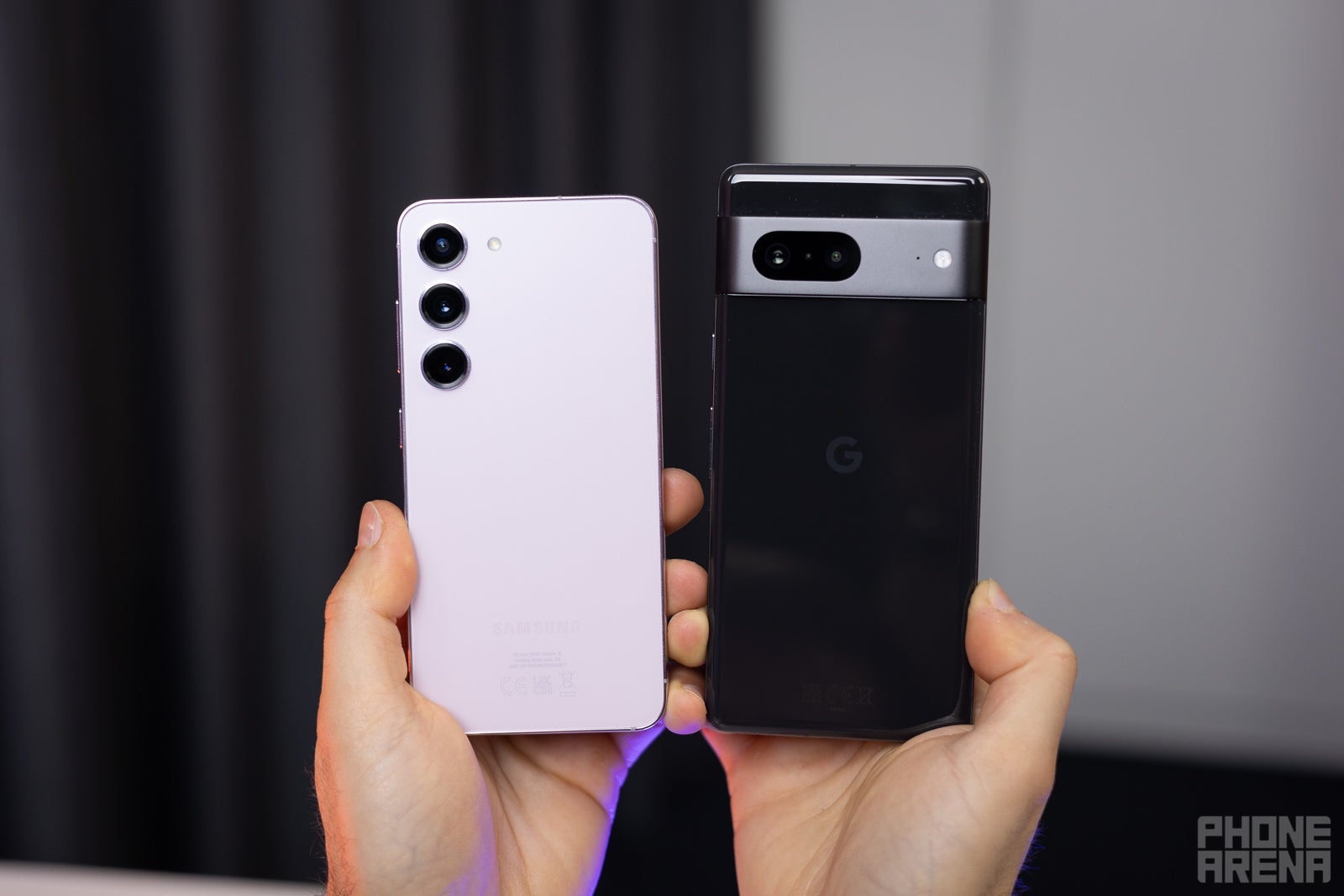
(Image Credit - PhoneArena) Despite its smaller size, the Galaxy is equipped with a much faster chip
We've already mentioned the good news in the form of the new Snapdragon 8 Gen 2 chip on the S23, which ends years of frustrating Exynos releases for international customers.
But even in itself, the new Snapdragon 8 Gen 2 processor is a big moment for Qualcomm, which has had problems with overheating in previous chips (cough, Snapdragon 8 Gen 1).
The Snapdragon scores a big leap over previous models and over the Google Tensor G2 as well. Google says it doesn't really compete in the synthetic benchmarks and is instead focusing on improving AI performance and machine learning tasks with the Tensor, but those synthetic benchmarks matter nonetheless.
Performance Benchmarks:
When it comes to software, both are Android, but both are also very different.
The Pixel 7 comes with Android 13 the way Google envisioned it, which is mostly a clean and enjoyable experience, with a few peculiarities of its own like a persistent search bar and "At a Glance" widget that you cannot remove. But apart from these little quirks, it's a brilliantly smooth and pleasing experience. Plus, you get quite a few unique features:
- On-device speech to text translation with extreme accuracy
- Advanced photo editing tools: Magic Eraser
- Portrait Mode effect on regular images with a simple edit
- Call screening and others
Samsung, on the other hand, has its One UI 5.1 on top of Android 13. It looks just like Galaxy phones of the past, even if it adopts bits and pieces of the Material You design scheme that is most prominent on the Pixel. Samsung adds its own spice to this skin and the latest additions include more effortless multitasking and even multi-user support, all very cool features.
And then there is the software update situation. Samsung gives 4 years of major software updates, while Google promises 3 years. We appreciate the longer software support from Samsung, but we also have to remember that those software updates will arrive with a delay on the Galaxy, while the Pixel gets the new Android versions on day one, so that is also something to keep in mind.
In terms of connectivity, the Pixel 7 features an Exynos 5300 5G modem, which users report is a welcome improvement and fixes signal reception issues for many. The Galaxy, however, has the even more advanced Qualcomm X70 5G modem, which does an even better job with faster speeds and better performance.
Camera
Galaxy has three cameras, Pixel has two, but which one takes better photos and videos?
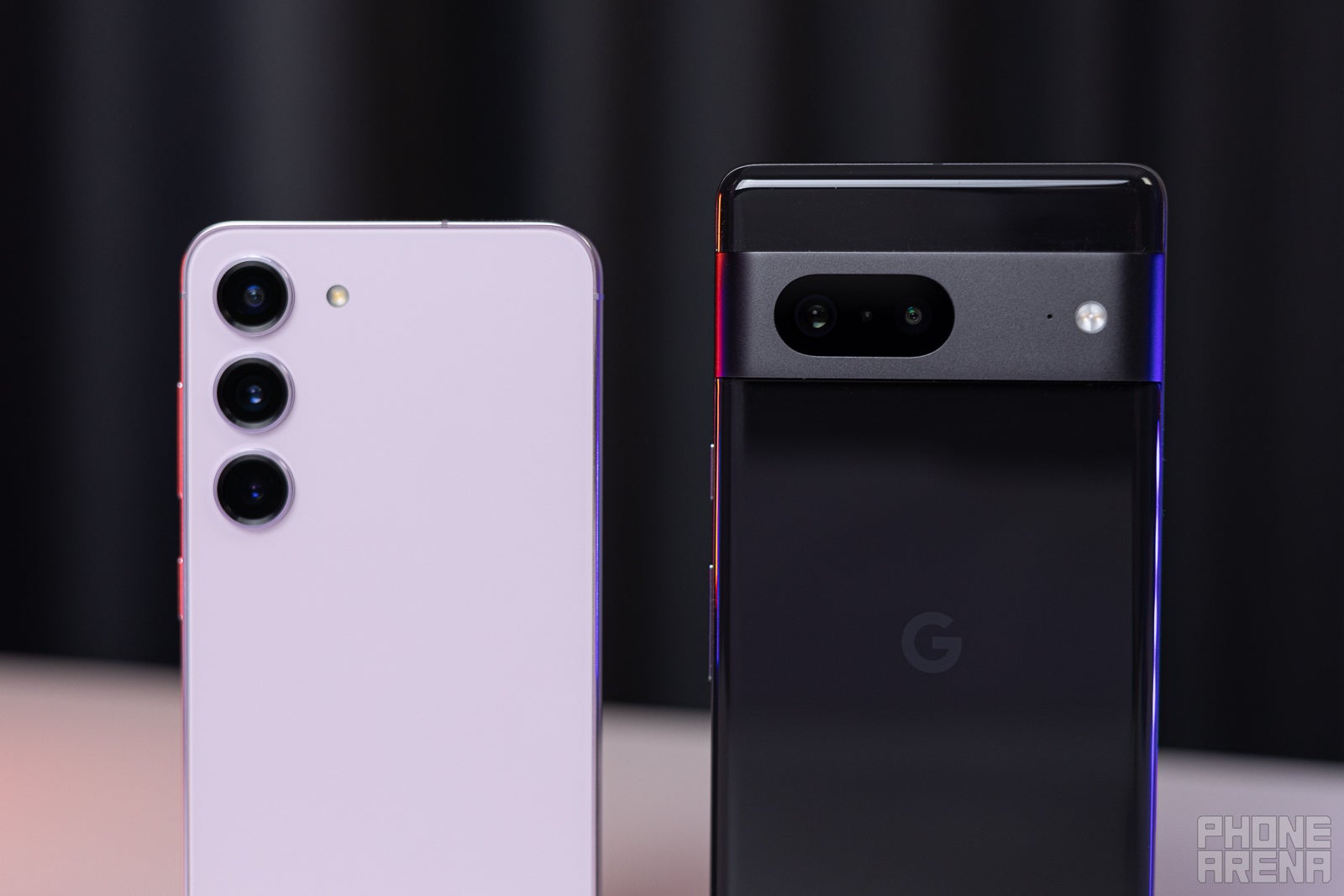
(Image Credit - PhoneArena) The Galaxy has a zoom camera, which the Pixel lacks
With a triple camera system on its back, the Galaxy clearly has at least one camera advantage over the Pixel and that is the 3X zoom telephoto camera on the Galaxy.
For all else, the camera specs are not too different. Both phones come with a 50-megapixel sensor for the main camera, and then a 12MP one for the ultra-wide camera.
The Pixel 7 features a brand new 2X zoom mode which uses a central crop of the sensor and provides much better quality than just digital zoom, something that is missing on the Galaxy.
Main Camera - Good Light
Unsurprisingly, both phones fare well in broad daylight, but they have their own distinct looks. The Galaxy goes for a brighter and more cheerful exposure and strong, punchy colors that are oversaturated and not quite realistic. The Pixel goes for a darker exposure and photos on it are far less colorful and more neutral. Neither one is quite perfect: it would be great if we had a less saturated color mode on the Galaxy, and it would be awesome if the Pixel offered a slightly brighter and more saturated image.
Once again, you can see the often wild colors as the inky blue skies here on the Galaxy. It lifts up the shadows way more than the Pixel too.
Ultra-wide
The distinctions carry over to the ultra-wide camera too. The Galaxy offers the wider perspective, while the Google is a bit tighter. The Samsung phone also goes for these slightly colder tonalities, while the Pixel likes its colors warmer.
Zoom
With no zoom lens, it's no surprise that the Pixel loses this round. The Galaxy has far more detail and is clearly the better camera if you ever want to zoom in.
Portrait Mode
Another big weakness of the Pixel is its portrait mode. It sorely lacks detail and just doesn't look great, which you can see clearly against the well-performing Galaxy. The Samsung has more detail, more pleasing colors, it's better all around.
Selfies
Both phones offer a wide and close-up view for selfies. The wide view is really wide on the Pixel, which is great when you want to capture a bigger group of people. But are fantastic for selfies in their own way: the Pixel slightly darker in exposure, the Galaxy going for the brighter exposure and lifted up shadows.

On the video side, the Galaxy supports a few unique features like 8K video recording, which is missing on the Pixel. This is not something many people will use on a daily basis, but video enthusiasts will certainly appreciate having this option.
Audio Quality and Haptics
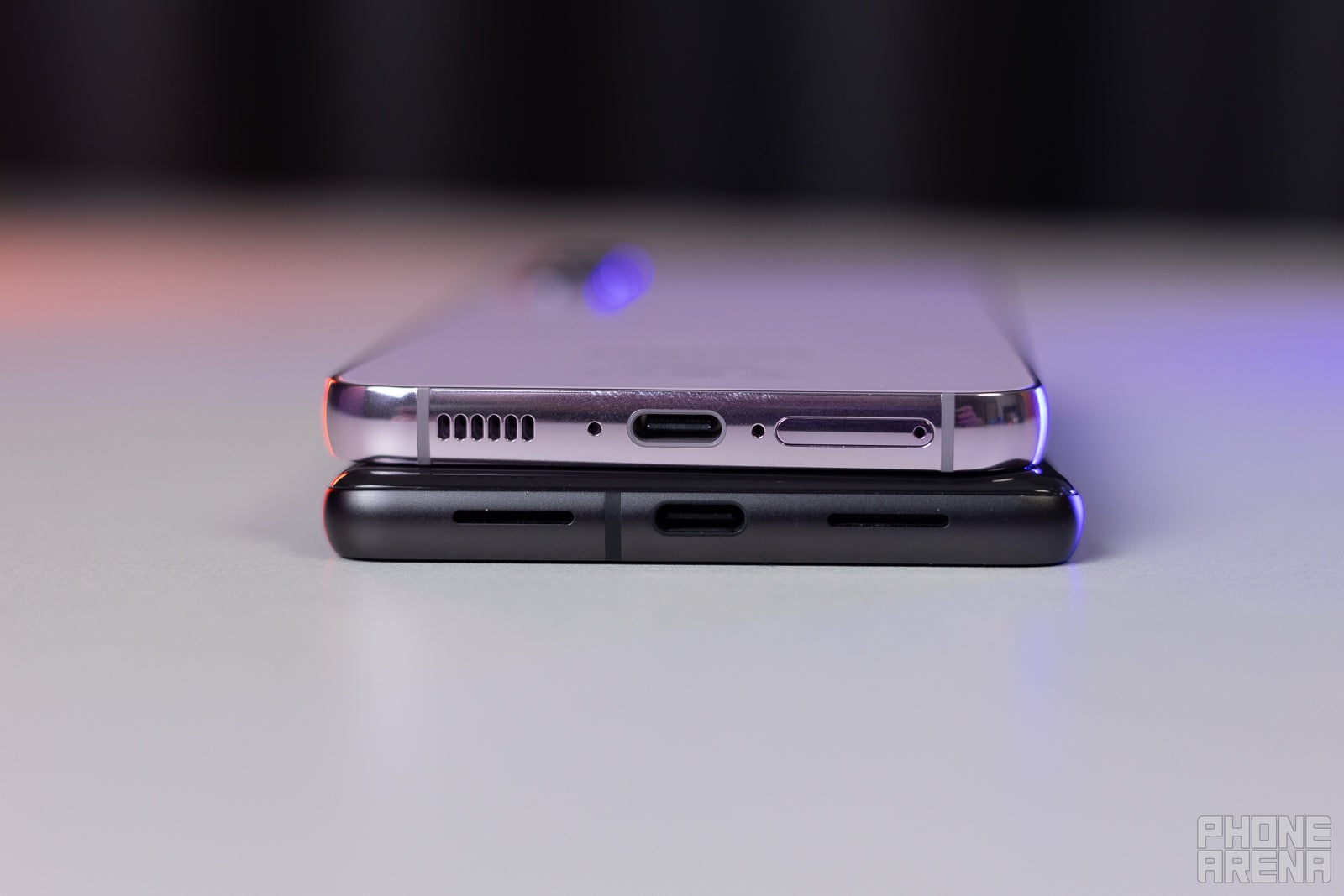
(Image Credit - PhoneArena) Galaxy S23 has slightly better loudspeakers
There is no 3.5mm headphone jack on either of these two phones. This is not a surprise, but rather the norm for high end phone, so like it or not, it's the way things are.
As for the audio quality coming out of those loudspeakers, we would rank the Pixel 7 as just about average. Sound quality is actually very similar to that from last year's Pixel 6, with minimal distortion, but it lacks the depth and bass of say an iPhone 13/14. The Galaxy S23 does a bit better with louder sound with more definition.
Battery Life and Charging
The larger size of the Pixel is also why it has a bigger battery
We have pointed to the smaller size of the Galaxy S23 as mostly an advantage for those looking for a compact phone, but a smaller phone inevitably comes with a smaller battery too.
The Galaxy S23 features a 3,900mAh battery, nearly 10% smaller than the 4,355mAh battery cell used on the Pixel 7.
That is no small number.
We do expect, however, the Samsung phone to gain from a more efficient Snapdragon chipset and a newer screen technology.
In terms of charging, no huge changes. Both the Galaxy and Pixel charge at speeds that do not impress, but we guess that these companies either consider those figures "safe" or they just don't care about faster charging technologies.
You have a 25W max wired charging speed on the Galaxy and 21W on the Pixel, so the Galaxy takes around 1 hour and 10 minutes for a full charge, while the Pixel takes around an hour and 40 minutes.
Wireless charging is also supported on both, and both also have reverse wireless charging, which can be a useful feature to quickly top up your headphones or smartwatch.
Specs Comparison
And if you just want to see all the specs neatly laid out in a table, we've got you covered right below:
| Specs | Galaxy S23 | Pixel 7 |
|---|---|---|
| Dimensions and Weight | 146.3 x 70.9 x 7.6 mm 168 g weight | 155.6 x 73.2 x 8.7 mm 197 g weight |
| Screen | 6.1-inch, 1080 x 2340 pixels, 19.5:9 aspect ratio 48 - 120Hz OLED (LTPS) | 6.3-inch, 1080 x 2400 pixels, 20:9 aspect ratio 90Hz OLED (NOT LTPO) |
| Processor | Snapdragon 8 Gen 2 | Google Tensor G2 |
| RAM and Storage | 8GB + 128GB 8GB + 256GB | 8GB + 128GB 8GB + 256GB |
| Cameras | 50MP main cam, 23mm, f/1.8 12MP ultra-wide 10MP 3X zoom telephoto, f/2.4 12MP front cam | 50MP main cam, 25mm, f/1.9 12MP ultra-wide - 10.8MP front cam |
| Battery Size | 3,900 mAh | 4,355 mAh |
| Charging Speeds | 25W wired 10W wireless Supports reverse wireless charging | 21W wired 21W wireless Supports reverse wireless charging |
| Price | From $800 | From $600 |
For even more details, head on over to our Galaxy S23 vs Pixel 7 specs comparison page, where we dive deeper in specifics like 5G band support and other interesting details.
Summary
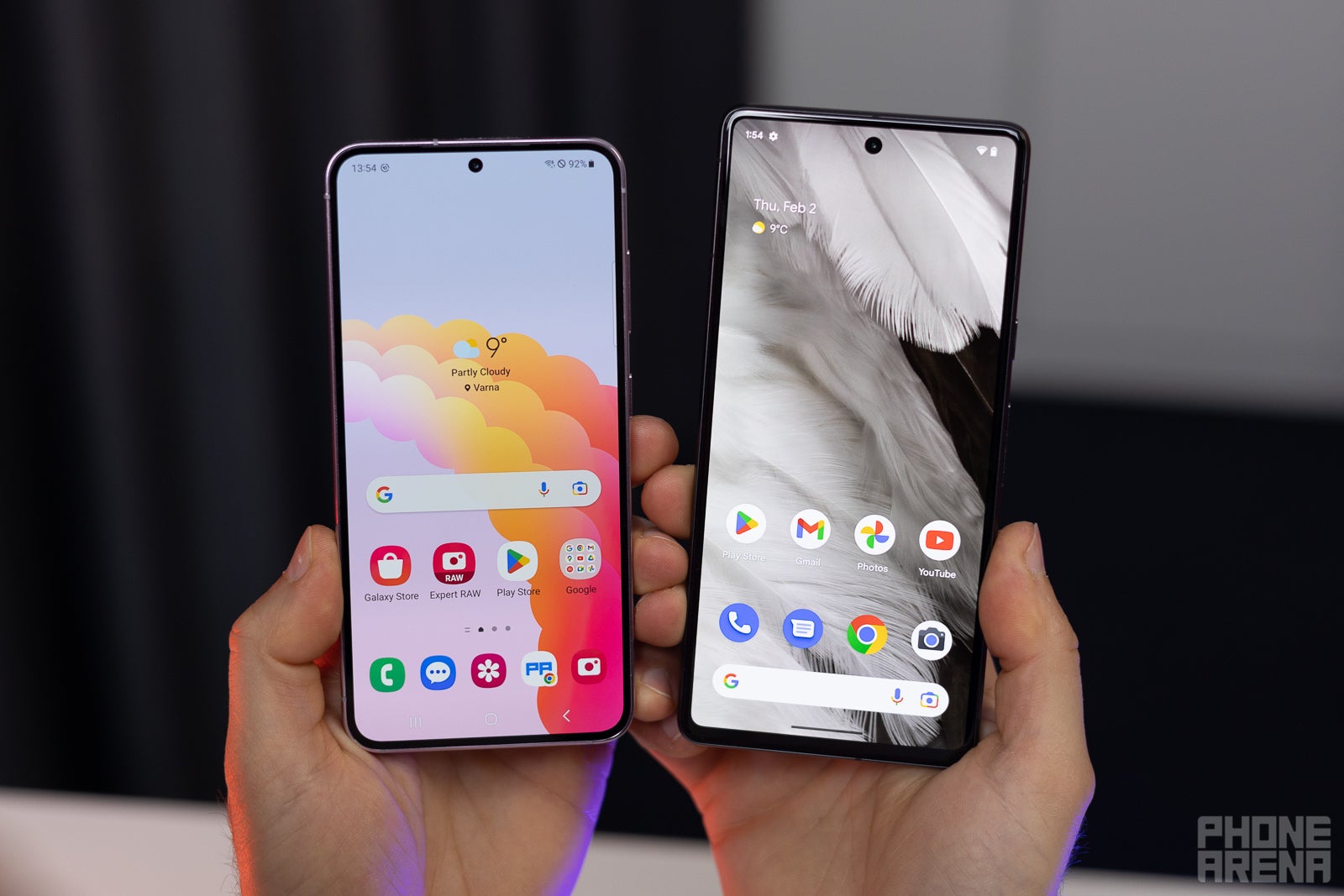
(Image Credit - PhoneArena) Which one would you pick?
As a summary, the Galaxy S23 ups the ante with a faster processor with excellent thermals, which we see as the biggest upgrade for the series in years. Samsung is bringing smaller improvements to the camera and it has been adding new and useful features to One UI. We also love that the Galaxy truly lives up to the "compact phone" ideal and is very light weight too.
The Pixel 7, on the other hand, has a slightly less impressive specs sheet, but the actual experience of using it is extremely positive. The clean Google experience feels incredibly smooth, the camera quality is top notch, and the promise for day one Android software updates is still unmatched in the Android world.
You can't go wrong with either one of these, but Samsung wins in most categories and especially in just how compact and powerful the phone is, while the Pixel prioritizes the clean interface and the lower price at the expense of a slightly slower chip and less advanced screen.
So... which one would you go for?













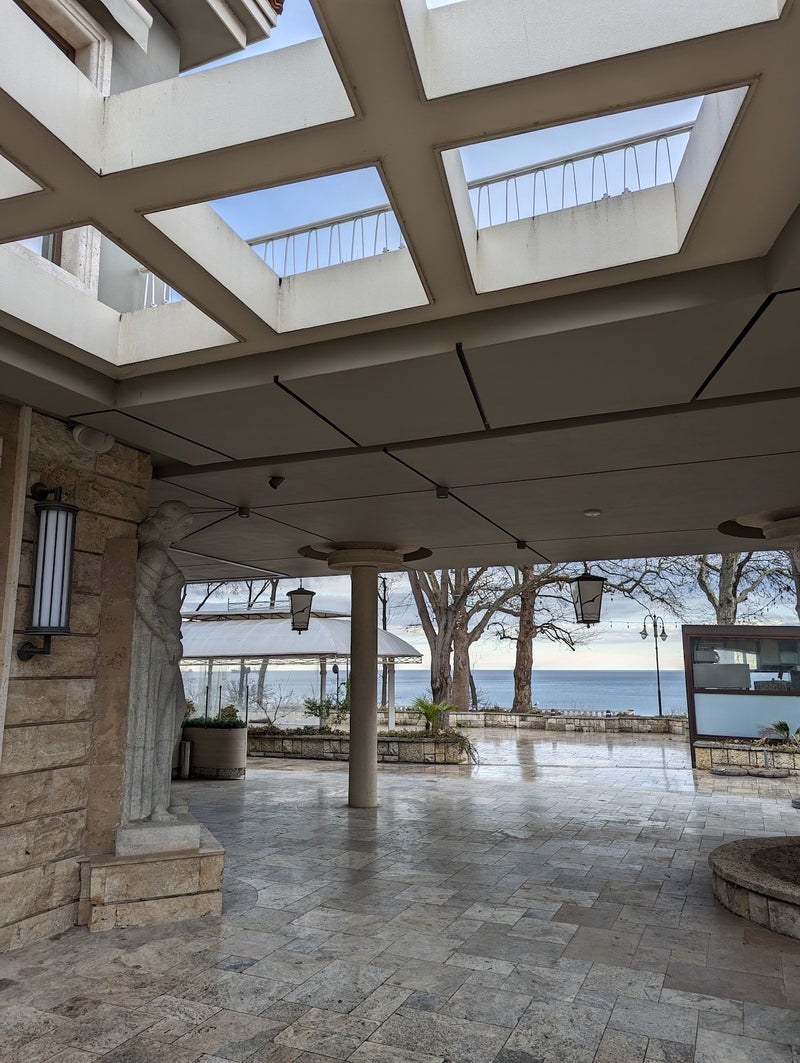

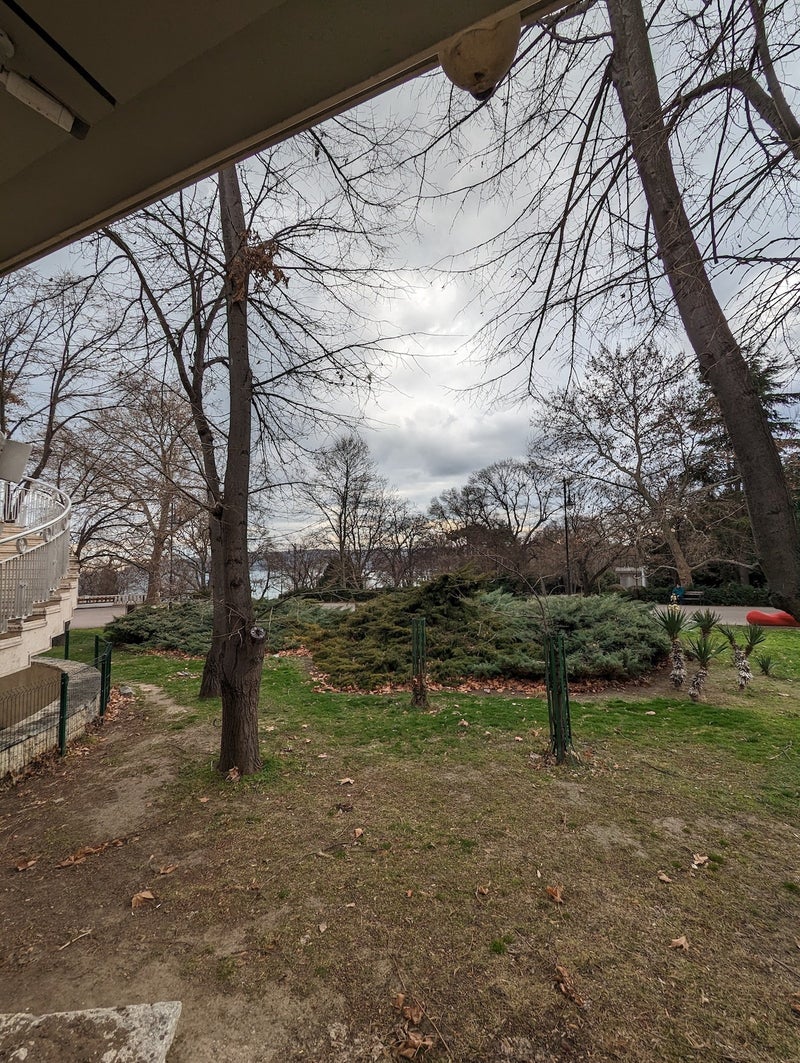



















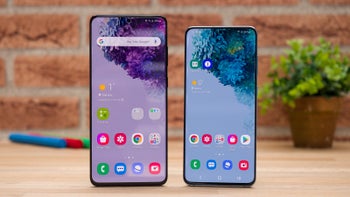












Things that are NOT allowed: